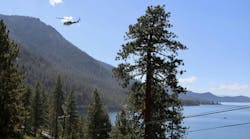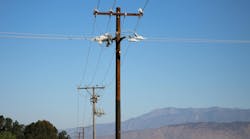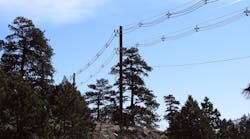The increased frequency and severity of extreme weather events are challenging utilities and the communities they serve. Reducing wildfire risks and ensuring the ability of electric companies to invest in mitigation is a top priority for America’s investor-owned electric companies. A national, holistic approach is needed to help all stakeholders enhance safety and reduce wildfire risks.
Key Objectives
The Edison Electric Institute (EEI) and our member companies have identified — and are working toward — three broad objectives to help electric companies across the country address wildfire risks and liability. We are committed to:
- Sharing leading practices and establishing a common understanding of the range of risk-informed wildfire mitigation activities that can be undertaken to reduce ignitions from electric infrastructure.
- Expanding partnerships with the full complement of stakeholders needed to address wildfire risk at the
community, state, and federal levels. - Working closely with regulators, policymakers, ratings agencies, and investors to ensure that electric companies are well-positioned to continue supporting national and economic security; building a clean, resilient energy sector; and helping electrify other sectors.
EEI members are working to limit potential wildfire ignitions related to their infrastructure and deploying new technologies to ensure better situational awareness and wildfire detection capabilities. This includes selectively undergrounding high-priority and high-risk lines; the use of covered conductors to strengthen lines and to prevent sparking when debris comes into contact with broken power lines; and the expanded use of automatic reclosers with more sensitive settings to prevent sparking when the system detects an anomaly.
Managing vegetation on electric transmission and distribution rights-of-way is another key to reducing risks. Utilities must have timely access to ROWs to perform necessary vegetation management, as well as routine operations and maintenance work.
Electric infrastructure also can be used to enhance situational awareness. Sensors and weather stations can help system operators identify high-risk areas, and these technologies are especially helpful for monitoring hard-to-reach areas. Functioning like high-tech fire lookout towers, this information is driving enhanced coordination with first responders to help ensure any fires — regardless of the ignition source — can be quickly detected and controlled, ultimately limiting damages.
Electric companies also are partnering with technology companies and the DOE’s national labs to develop and test new ways to operate and manage the energy grid. Through this partnership, this industry is working to find new solutions to reduce wildfire risk and to ensure electric companies are prepared to respond safely and efficiently when incidents do occur.
Members also are using existing mutual assistance frameworks to expedite emergency response capabilities to restore power after extreme weather events and to implement, when necessary, proactive shutoffs to minimize the risk of wildfires during certain weather conditions.
De-energizing power lines is a tool of last resort used to address imminent wildfire threats and to minimize the possibility for catastrophic damage and loss. When evaluating whether to utilize proactive shutoffs, system operators need to coordinate with customers, emergency responders, and other critical infrastructure stakeholders. They must also consider the response time it can take to inspect lines before they can be turned back on safely.
The Holistic Approach
Most wildfires impacting individuals and communities are caused by events other than those involving electric companies. In the United States, the two largest causes of wildfires are lightning strikes and human activities. While electric companies are making investments to address the risks that their equipment might pose, the increasing frequency and destructive force of wildfires must be addressed holistically.
Today, EEI is working with its members and other stakeholders to identify potential legislative and financial options to mitigate risk and to address uncertainties around liabilities. EEI and its members are also educating Congress, the Administration, and state and local governments about the risk that wildfires pose to the financial health of electric companies and their ability to provide customers with affordable, resilient clean energy.
EEI member companies, in partnership with the Electricity Subsector Coordinating Council’s Wildfire Working Group, are actively engaged with the U.S. Forest Service; Departments of Agriculture, Energy, and Interior; the National Security Council; and the Federal Aviation Administration to advance strategies to enhance industry-government coordination; harmonize allocation of resources; and identify barriers to the industry’s detection, mitigation, and restoration capabilities. EEI also is working closely with state regulators as they partner with electric companies to reevaluate risk profiles and to identify prudent investments that can be made to drive down risk. EEI will continue to work with these federal and state agencies and will expand efforts with FEMA and the FCC, as well as with federal firefighting resources, to ensure we are mobilizing a whole-of-industry and whole-of-government response to the growing wildfire threat.
Riaz Mohammed is the senior director of Resiliency and Environmental Policy at the Edison Electric Institute.


